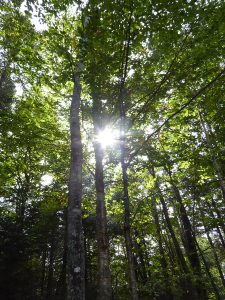 So says Brian Kittler in an article on Ecosystem Market Place.
So says Brian Kittler in an article on Ecosystem Market Place.
“Making up nearly half of the forestland in the country, family forests are a crucial part of the carbon sink. Relative to other private forest ownerships, the per-acre carbon stored on many of these lands are significantly greater; trees are often older, and forests more structurally complex than intensively managed industrial timberlands. Many family forest owners could even enhance their carbon stocks further with the guidance of a professional forester, and an improved forest management protocol.”
Kittler says his organization, “the Pinchot Institute for Conservation, and ecoPartners LLC, together, with several partner organizations, are pushing innovation in the design of improved forest management projects to unlock the carbon market for family forest owners. Over the next two years, this partnership will advance this model across much of Western Oregon and Washington.”
View How US Land Owners Can Tap Carbon Markets In Trump Era
‘Would be nice to see such initiatives in Nova Scotia. (About 55% of forested land in Nova Scotia is held by private, non-industrial owners, some 30,000; ‘hard to get firm numbers.) The only project of this sort in the Maritimes that I am aware of is the Community Forest International (CFI) project in New Brunswick, spoken about recently by Dale Prest with CBC (Jan 10, 2017). Currently CFI sells carbon credits to private buyers which is a limited market, but Prest says that if the province (N.B.) joined the carbon trading system already established by Ontario and Quebec, it would really open up this market. Prest has likewise urged the Nova Scotia government to Open Up NS Cap & Trade to accommodate forest carbon capture.
As in the U.S., the mechanics of helping private woodlot owners to get involved in such programs is probably best handled by private forestry specialists such as CFI and WoodsCamp (it requires detailed documentation of forests and forestry practices and changes in forestry practices may be required or beneficial), perhaps in collaboration with conservation organizations such as NS Nature Trust and the Nature Conservancy of Canada (there are big conservation benefits as well as carbon capture) but government would have to put enabling legislation in place.
Prest stresses that wood can still be cut “just not all at once…we have been paid $3,000 per year for 100 years to keep our average stocking above 20 cords to the acre.” (Dale Prest in Nov 2016 NSWOOA Newsletter.)
‘Tip of the hat to TreeFrog for highlighting the Brian Kittler article.
